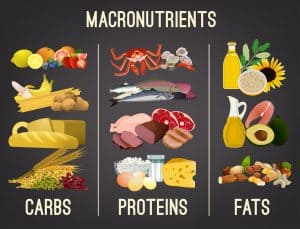You started or want to start a cutting phase by following a weight loss diet.
One important question you have to ask yourself is how long will the diet take to reach your goals?
In other words, how long should you stay on a caloric deficit!
If you are competing, your goal is to maximize fat loss while maintaining as much muscle as possible.
So, addressing this question becomes critical because you want to determine exactly how long before the contest you should start your diet.
8? 12? 16 weeks? Or maybe more?
If you are a regular bodybuilder that doesn’t compete or just a casual lifter, then start first and address the question as you go.
In any case, the answer to this question depends on two numbers; your current body fat and your ideal body fat goal after the diet.
Body Fat Percentage
Let’s first determine your current body fat percentage.
To do so, use a fat caliper or a measuring tape and follow the steps shown on this body fat percentage post.
Once you know your current body fat, now look up which category you belong to on this table.
Category
Female body fat %
Male body fat %
Essential fat
10 - 13%
2 - 5%
Athletes
14 - 20%
6 - 13%
Fitness
21 - 24%
14 - 17%
Average
25 - 31%
18 - 25%
Obese
> 31%
> 25%
If you are obese you should not aim to reach the “Athlete/shredded” body fat percentage on one long diet.
This is because you will lose muscle. This is why it is recommended to go on a clean bulk as opposed to a dirty bulk.
Instead, aim to reach the “Fitness” body fat category first, reverse diet for a few weeks, and then go on for another fat loss diet.
If you are in the ”Average” body fat category reaching the “Athlete” status is doable but with some sacrifices.
How long should you remain on a caloric deficit?
Now once you determine your current and future goal body fat percentage, you also need to determine how much fat you want to lose per week.
It is recommended to lose anywhere between 0.5 to 2.0 pounds a week. Anything over 2 pounds a week will not be sustainable for a long period of time.
Now here is simple math that will tell you how many weeks you should stay on a caloric deficit.
Number of weeks = (current body weight – future body weight) / Fat loss per week.
As a simple example, if you are 250 pounds at 22% body fat and want to lose 20 pounds of body fat, at 1 pound of body weight loss per week, then:
Number of caloric deficit weeks = (250 – 230) / 1 = 20 weeks!
So, after 20 weeks you should reach your goal.
Of course, the fat loss per week is not linear. Some weeks you will lose more, especially at the beginning as you tend to drop more water, and others you will lose less or even not lose at all.
It also depends on your hormone response and other physiological factors.
However, for most lifters, these weeks tend to average out and you should have a good estimate for the number of weeks on a caloric deficit.
How Much Body fat Percentage After Weeks on a caloric deficit - Detailed Example.
To put everything in perspective, here are the 6 steps you should implement when starting a fat loss program to determine your final body fat percentage after the desired number of weeks on a caloric deficit.
1
Determine your TDEE
Total daily energy expenditure (TDEE) is the number of daily calories your body needs to perform all the physiological and physical activities.
This number should tell you how many calories a day you should consume in order to maintain your current body weight.
Use this calculator to determine this number.
Example:
Gender: Male. Age: 26. Height: 5’ 10”. Current bodyweight: 250 pounds.
Current body fat (measure it): 22% . Category: Average.
Activity: 3-4 workout sessions a week.
TDEE (Daily Calories to maintain current body weight): 3000 Calories.
2
Determine your current body fat in pounds
Given the 22% body fat in our example.
The estimated body fat in pounds:
250 x 22/100 = 55 pounds of body fat.
3
Drop TDEE by 20-30%
Now, once you know your TDEE, reduce that number by 20% to 30%.
The resulting number is the number of calories you should eat to lose fat.
For our example above, if the person decides to drop the daily calories by 25%, it means he should consume 750 fewer calories a day.
So the daily total calories he should be consuming now is: 3000 – 750 = 2250 calories.
4
Translate to Fat loss.
The weekly reduction in fat is: 750 x 7 = 5250 kcal.
Now, let’s translate 5250 calories to body fat in grams:
Typically 1 gram of pure fat contains 9 calories.
Body fat tissue is 87% of pure fat, this means:
9 x 0.87 = 7.83 calories in 1 gram of body fat.
Weekly grams of fat loss = 5250 / 7.83 = 670.5 grams of fat
Given that 1 pound = 453.6 grams …
Weekly body fat loss in pounds = 670.5 / 453.6 = 1.48 pounds a week!
Or roughly 1.5 pounds a week!
5
Translate to final lost body Fat.
Since you’re losing 1.5 pounds on average, after 12 weeks you should lose:
1.5 x 12 = 18 pounds of body fat!
Use this weight calculator to figure this number out.
After 12 weeks of caloric deficit, your weight should be:
250 – 18 = 232 pounds
The number of current pounds of body fat lost = original body fat – dropped body fat.
= 55 – 18 = 37 pounds of body fat.
6
Determine your body fat percentage
The new body fat percentage:
Current body fat in pounds / current bodyweight x 100
37 / 232 x 100 = 16%!!
Category: Fitness!
Congratulations!
After 3 months only you now belong to the “Fitness” category!
Now let’s see what would happen if you were to continue beyond 12 weeks. Say 18 weeks!
1.5 x 18 = 27 pounds of body fat lost!
Body weight = 250 – 27 = 223 pounds
Body fat lost in pounds= 55 – 27 = 28.
New body fat percentage = 28 / 223 x 100 = 12.5%!
So after about 4.5 months you now belong to the “Athlete” category!
We simplified these calculations to determine the body fat percentage after a determined number of weeks on a diet with this calculator.
Given these steps, there are a few techniques to accelerate the fat loss after reaching a plateau. These include refeed days and carb cycling.













